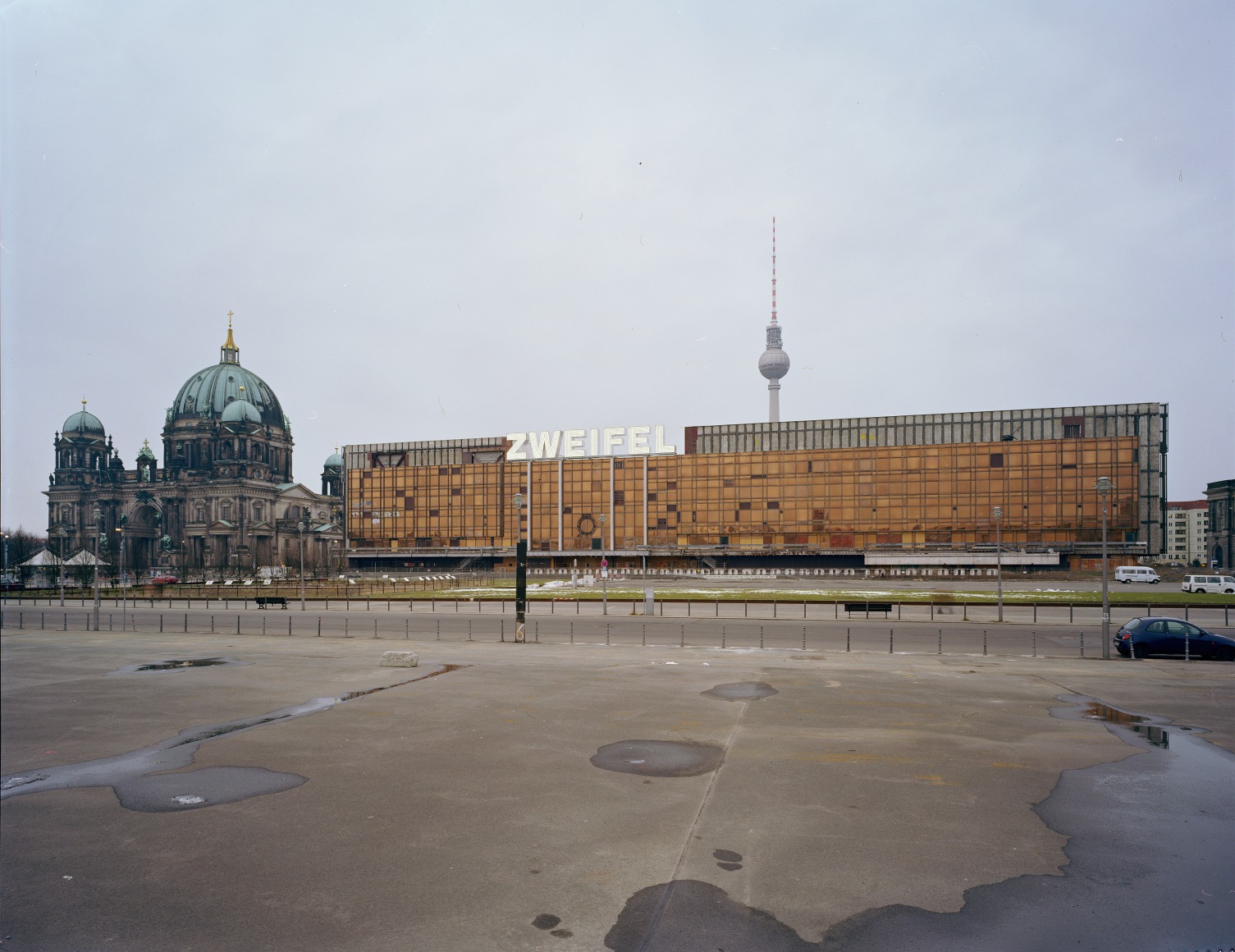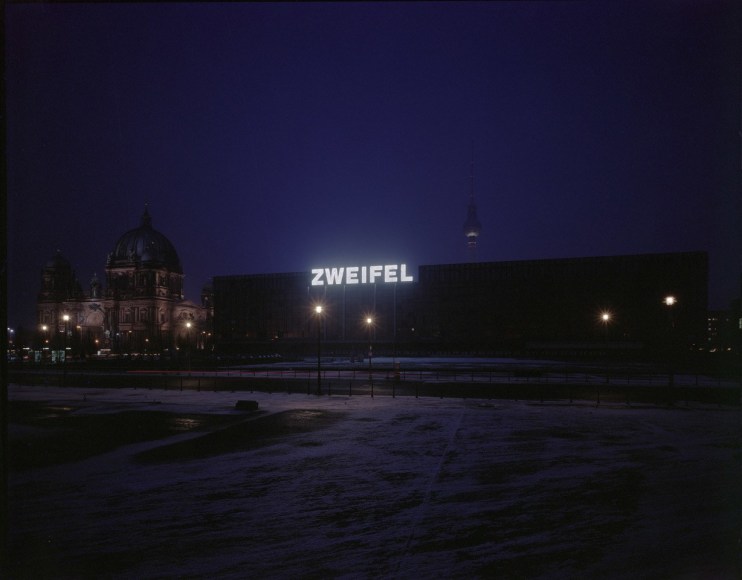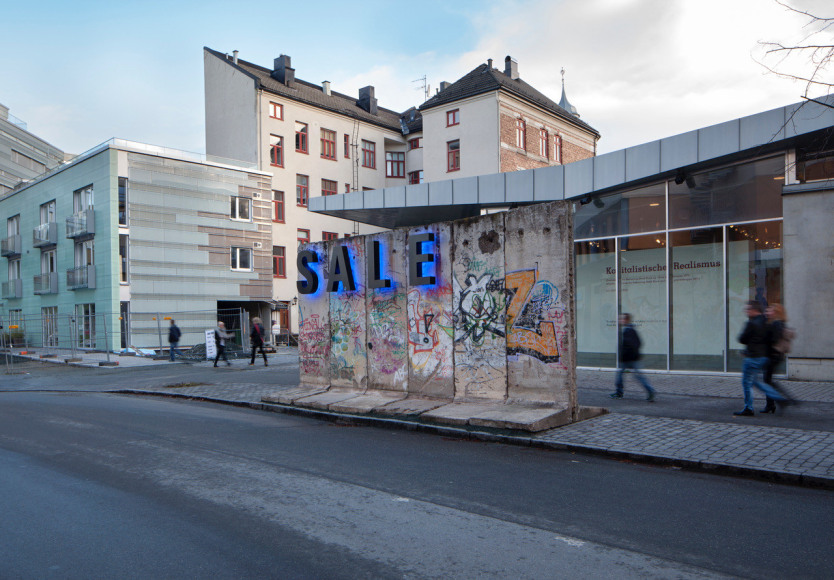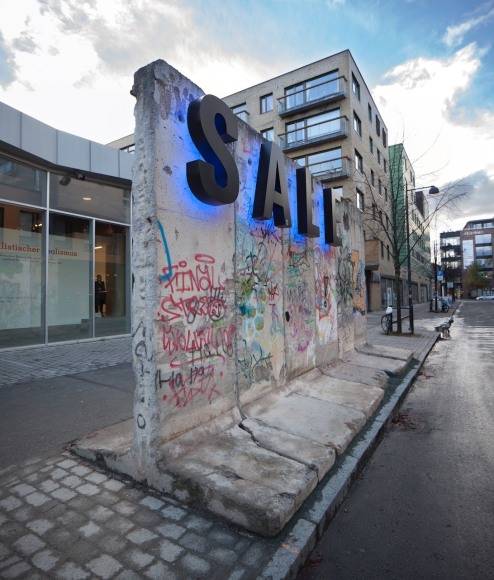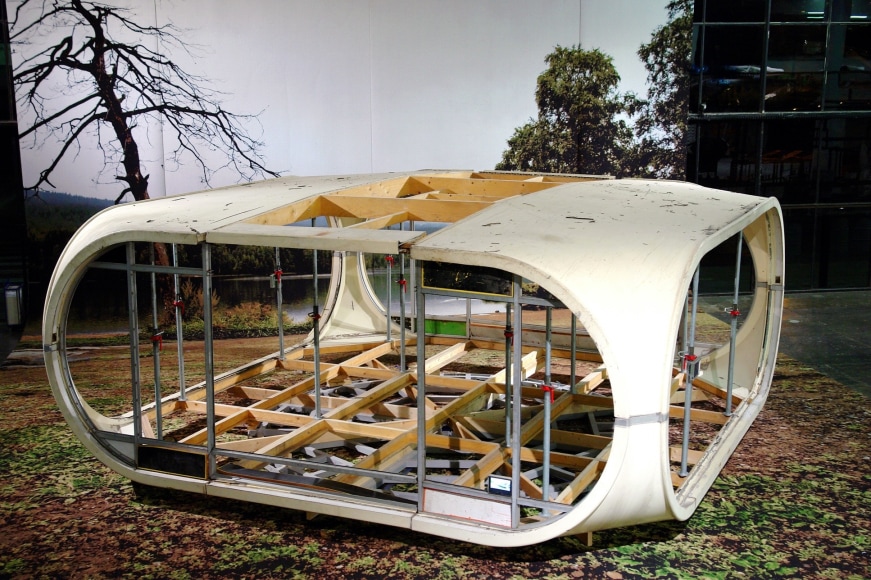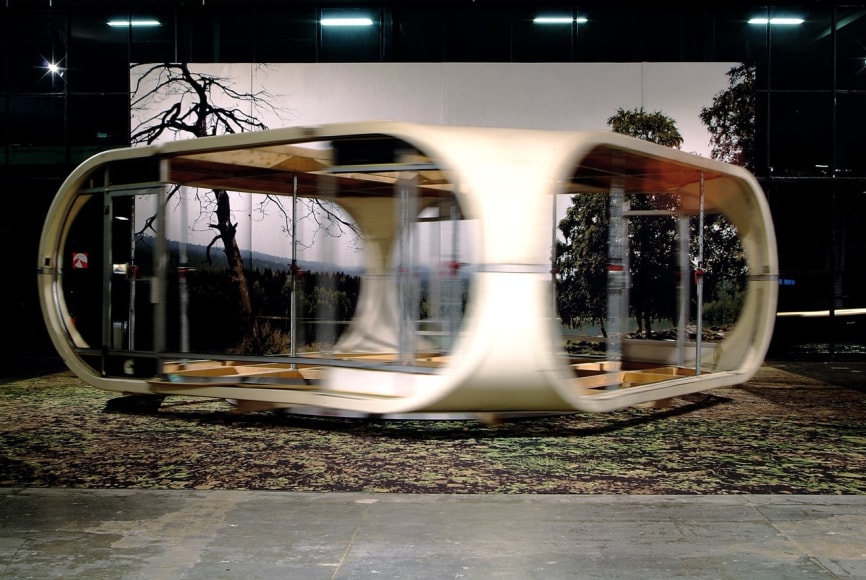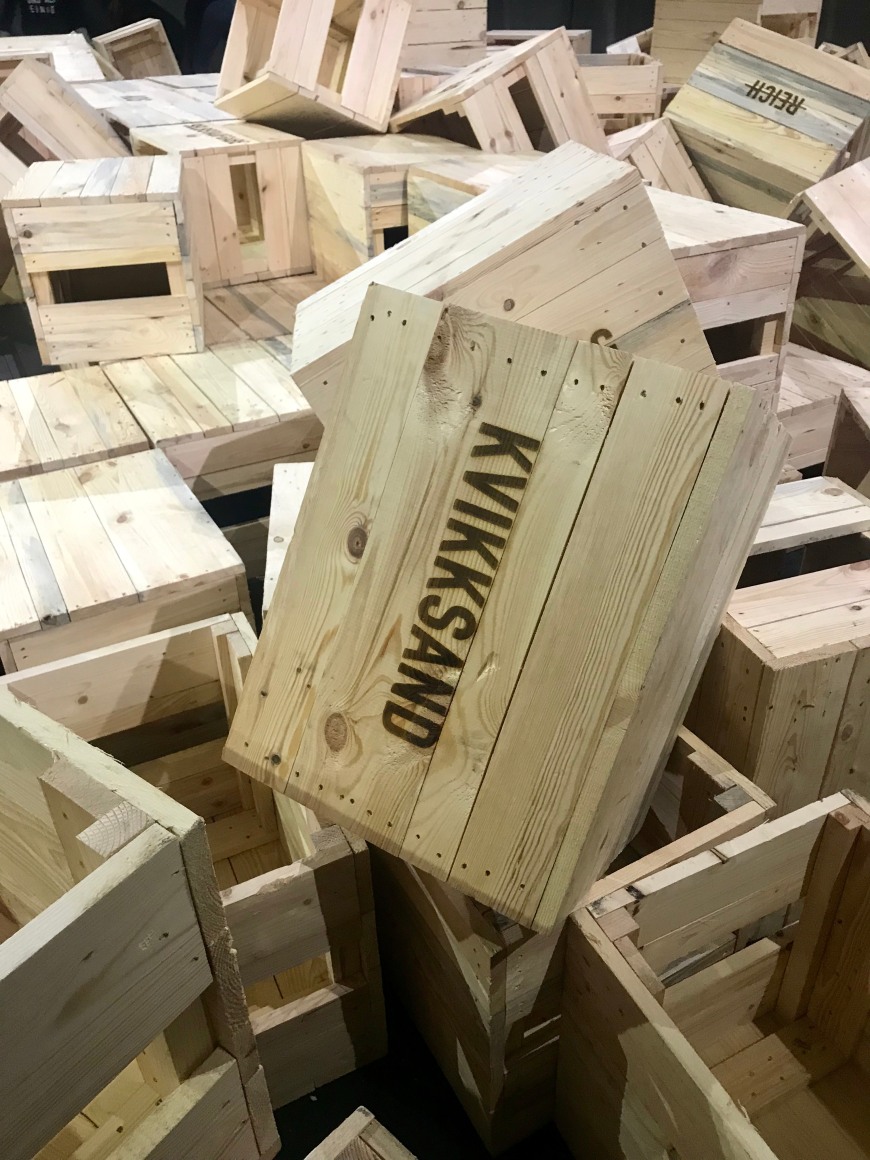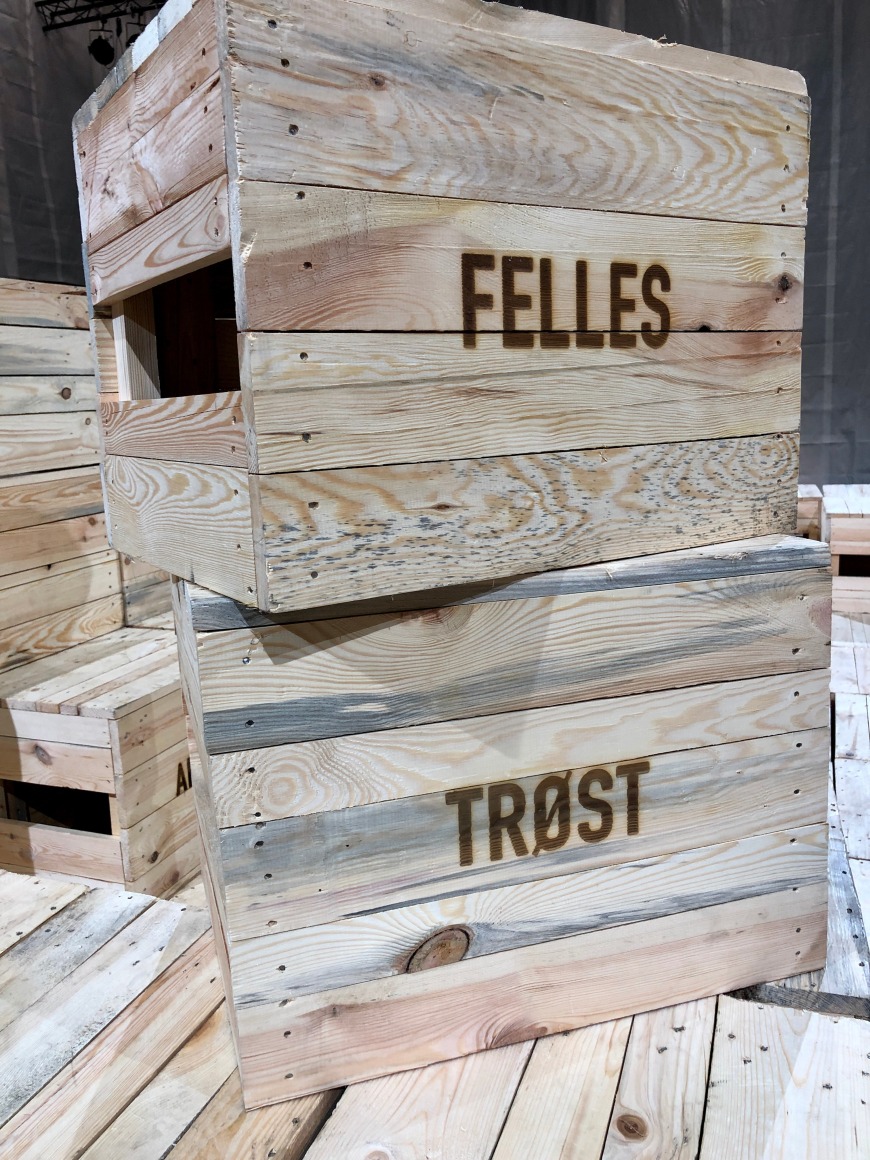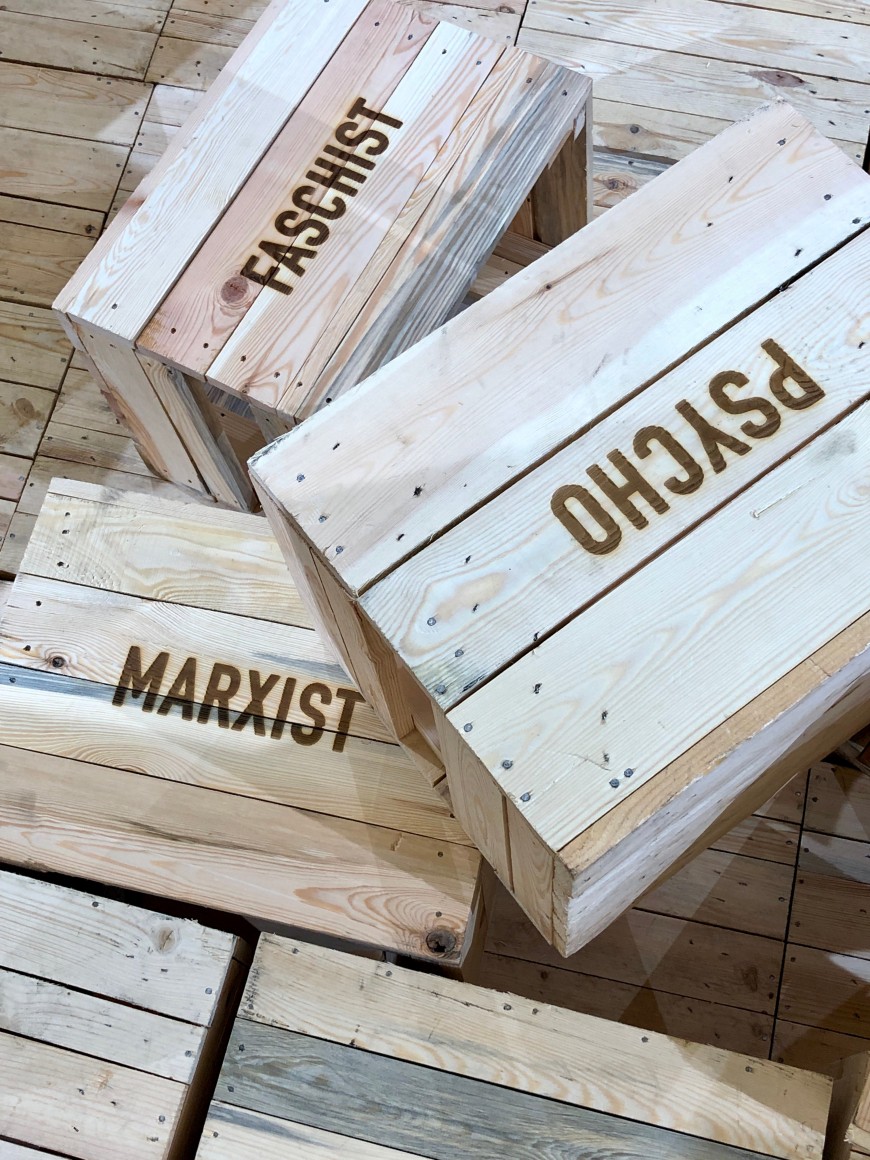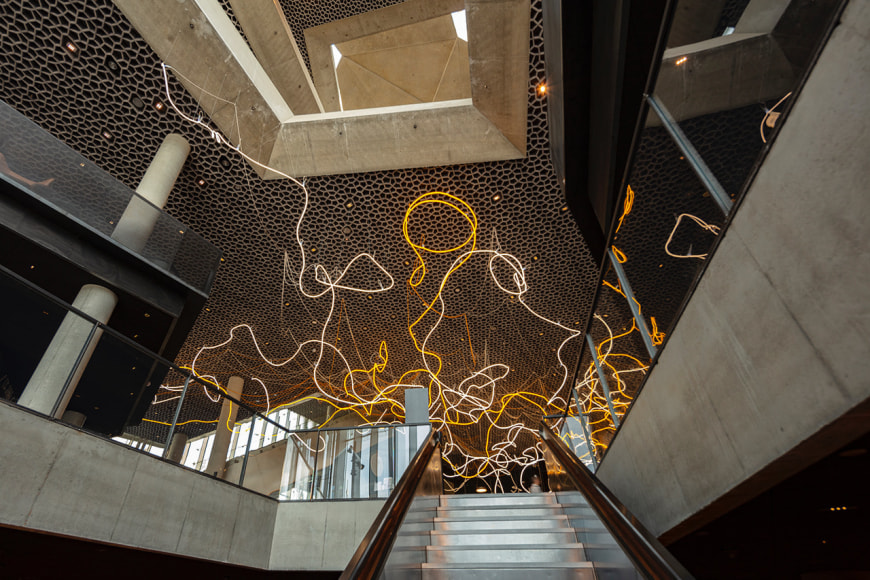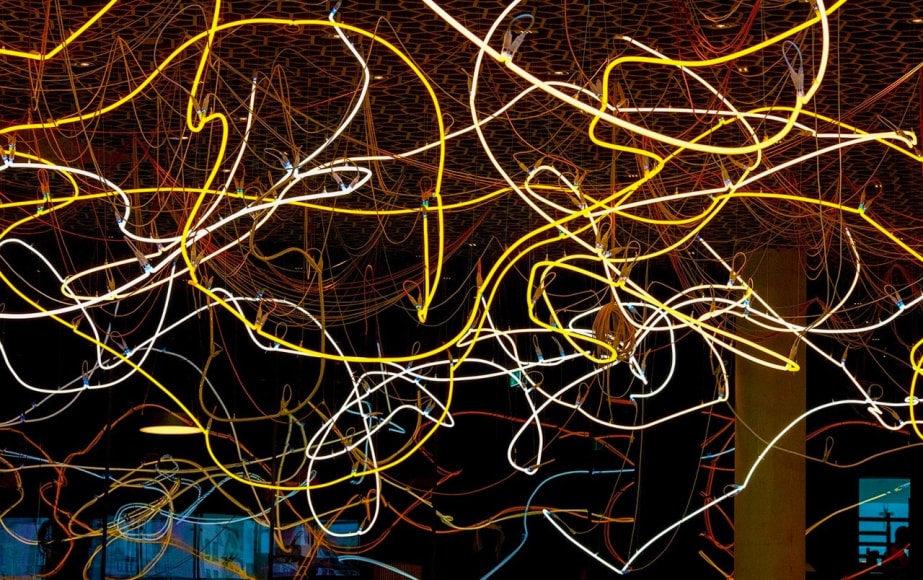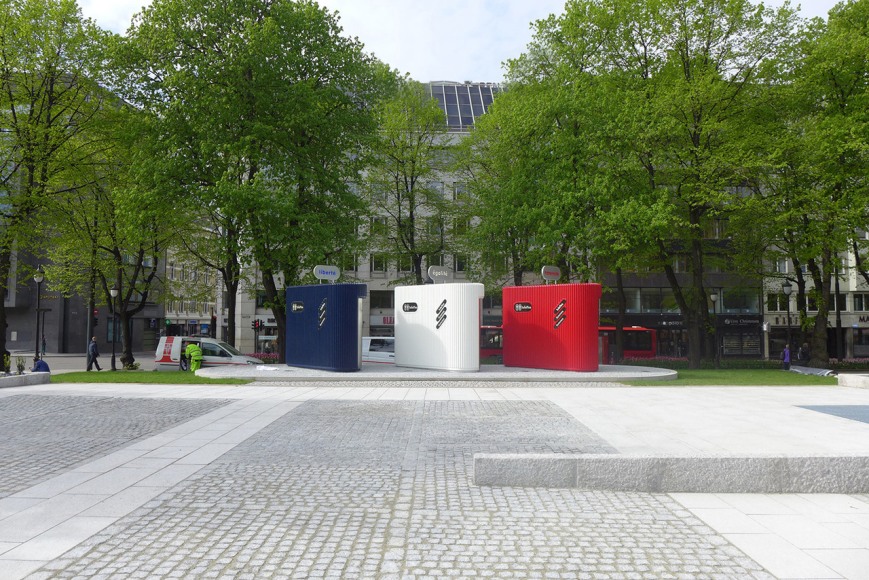
Lars Ø Ramberg lives and works in Oslo and Berlin. Since the 90s, he has created works of art that explore the identity of specific places, based on thorough research, often over several years. He is known for larger art projects in public spaces, relating to a specific context - revealing its hidden layers of discourse. Ramberg intervenes in public spaces using well-known or 'Ready Made’ objects, or he designs new objects provoking a public dialogue. He urges the need for a subjective and critical voice in public space, where new public management and product advertising is dominating. His projects often deal with doubt, and questions the existing values and perspectives in our society.
With Ramberg’s well-known art project "Liberté", he represented Norway at the 52nd Biennale in Venice. The project consists of three self-cleaning French toilets contextualizing the Norwegian constitution in red, white and blue. The three toilets are original French street toilets from 1979, designed by JCDecaux, and redesigned for Ramberg's artwork. Inside the toilets are sound recordings from World War II with speeches by Franklin D. Roosevelt, Charles de Gaulle and King Haakon of Norway. “Liberté” thereby establishes a connection between the Norwegian constitution and its French and American role models and invites reflection on the importance of fundamental democratic rights for individuals and groups in our society. Put into a historical context, the toilets represent freedom, fraternity and equality: One of the revolutionaries' proposals during the French Revolution was to provide their citizens with public toilets.
Originally, "Liberté" was Ramberg’s proposal to the Norwegian National Monument for the Constitutional Museum for it’s 100-year celebration; Norway’s liberation from Sweden in 1905. He won the competition, however, in a turn of events, the Museum refused to build the Art Work. This sparked international media debates and raised awareness on what liberation is, and what national identity entails. German-Swiss and American news reported, "Norway is celebrating its freedom, yet censoring its own liberty statue" As a result "Liberté" was instead presented in the 52nd Venice Biennial 2007 curated by René Block. After a ten-year-long, heated national debate Norway finally installed "Liberté" in front of the Norwegian parliament, as a permanent liberty statue.
In 2010, Ramberg created an artwork for the show "Restless Empathy" at Aspen Art museum consisting of 10 sculptures in a public space in Aspen, Colorado. The work titled "Benchmarks" consisted of wooden sculptures engraved with text in pure gold, referring to Hunter S Thompson’s critical voice in US politics and culture. Hunter S Thompson lived in Aspen and his widow Anita Thompson was an active part of Ramberg ́s research on this project. The project which was realized in collaboration between the artist, Aspen Art Museum and Aspen Skiing Company was first nominated – then won the first prize of the federal BCA10 in NYC 2013. The complete edition of "Benchmarks" was purchased by private collectors in Aspen City as a permanent installation in the public space.
"Last Dying Speech" 2012 is an ongoing project where Ramberg is connecting and collecting information from Speakers Corner in Hyde Park (London) with the Russian assassination of more than 250 journalists since the fall of the Soviet Union. Speakers corner started as a place for public hanging in England. At each of these public executions, the convict got a chance to perform a last dying speech. In St Petersburg, Ramberg constructed a social sculpture in Park Elagin, consisting of custom made wooden soapboxes, similar to the ones used at Speakers Corner in Hyde Park. A pile of more than 250 different boxes burn-marked with quotes and words from the dead journalists was presented as a performative and interactive installation where the audience was invited to perform their own freedom of speech. Ramberg is currently in the process of working on a new version of this project destined for Moscow.
One of Ramberg’s most celebrated projects is "Palast des Zweifels", 2005, in which he transformed the Palace of the Republic, the abandoned building of the GDR parliament, into a conceptual "palace for doubt". His monumental text installation which spelt out ZWEIFEL (doubt) towered over the palace's roof, lightening up Berlin's historical centre. The project expressed the vital feature of doubt of the German post-war identity and questioned the attempts to transform history overnight. The destiny of Palast der Republik, the very seat of the DDR parliament and an important community centre that replaced the ruins of Kaiser Friedrichs Stadtschloss after WWII, and was a prime example of the political dilemma after 1989. After years of lobbying and only a year before demolition, Ramberg crowned the building with "ZWEIFEL" for 6 months, arousing debate amongst the public, international newspapers and within the German Parliament. Now, a decade later, the discussion has rekindled, with cultural institutions questioning the reconstructed Kaiser Friedrichs Stadtschloss and calling for "ZWEIFEL" to adorn the structure.
In 2016 Ramberg won the international competition for a permanent sculpture installation in the new Deichman Library in Oslo. The concept raises awareness of the identity of a public library, and where it derived from, namely the era of enlightenment with Kant's slogan "Dare to know". With this as a starting point, the project working title "from Daring to Sharing" stretches these values and assimilates them with the values and dilemmas in the contemporary information society. The sharing culture has become both a democratic tool, but also a tool for fake news and virus. The final work with the title BRAINSTORM is focusing on the new library as a collective brain where EQ empathic coefficient is as important as the IQ. The project stresses the need for space for new uncensored individual thoughts, in the context of a larger collective consciousness and public opinion.
Currently, Ramberg is behind 1 of 3 art projects (Lars Ø Ramberg, Mia Habib Productions + Counterfactual and Kunstnerboligforeningen) elected to participate in the development of the district of Økern in Oslo. Originally a warehouse-based industrial area, Økern will become an urban area with housing, commercial buildings and public spaces. The development of Økern aims to integrate artistic competence at an early stage, in order to challenge and enrich conventional ways of integrating art in urban spaces. In his project at Økern Ramberg will pinpoint what he considers the district's historical anchor; Økernsenteret. As with all of Ramberg’s art, the process will decide the ultimate materialization of this ongoing project and will be realized in the coming years.
Ramberg has exhibited in national museum Hamburger Bahnhof Berlin, Martin Grophious Bau, Museo Tamayo Mexico City, Moderne Museet Stockholm, Kunstpalais Erlangen Germany, Kunsthalle Rostock Germany, Arken Museum of art Denmark, Kunsthaus Dresden Germany, Trondheim Art museum, Kommunikationsmuseum Berlin. He is represented in public collections of Museum for Contemporary Art (Norway), National museum for Art Norway, Aspen Art Museum USA, Equinor Norway, University of Oslo (law department) Oslo Kommune Kunstsamlinger, Norway and Deichman New national Library Oslo.

